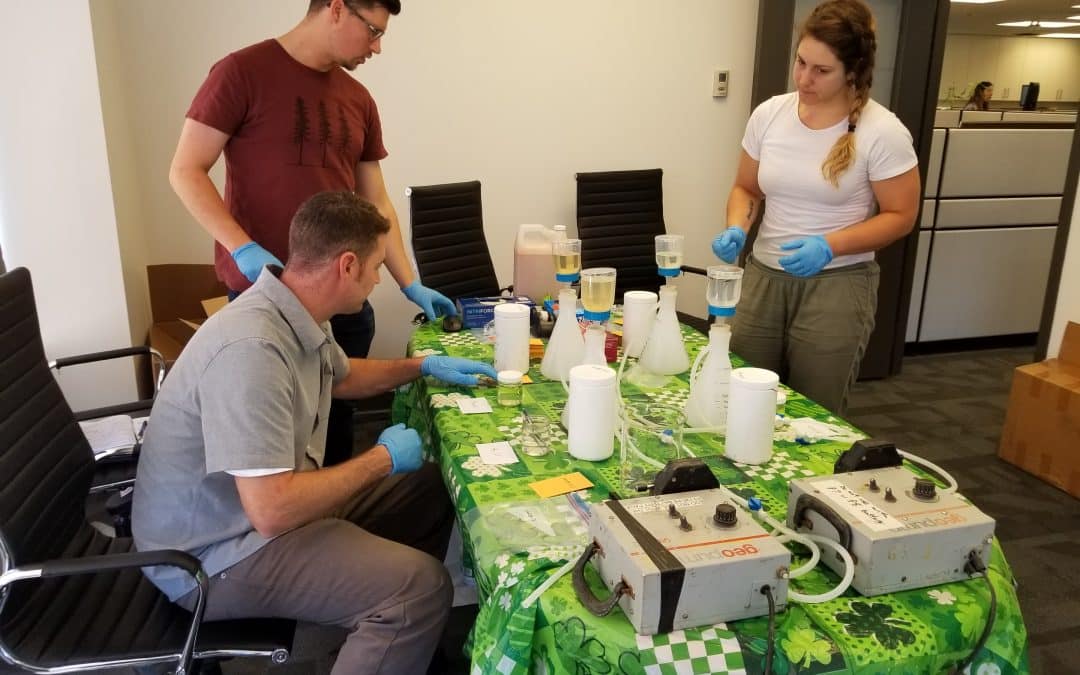A new and exciting opportunity to discover what species are living in a habitat has arrived! The process is called environmental DNA, or eDNA, and involves the analysis of environmental samples (e.g., water) to determine presence of a fish or aquatic wildlife species of interest. DNA in skin, hair, and waste of aquatic species are present in water or soil. Terrestrial applications include collecting scat or hair. For aquatic applications, a water sample is collected in the field and then filtered to collect any DNA. The sampled DNA is then compared to known DNA from the target species to determine a match.
 The process of eDNA is known to increase the likelihood of detecting rare or cryptic species when compared with traditional inventory surveys, such as trapping or visual surveys. eDNA analysis is also a non-invasive survey technique, thereby reducing the likelihood of requiring special collection permits that are time consuming. In addition, traditional field survey techniques can require hours of data collection making them relatively expensive, where eDNA may be completed in a fraction of that time to collect and process samples.
The process of eDNA is known to increase the likelihood of detecting rare or cryptic species when compared with traditional inventory surveys, such as trapping or visual surveys. eDNA analysis is also a non-invasive survey technique, thereby reducing the likelihood of requiring special collection permits that are time consuming. In addition, traditional field survey techniques can require hours of data collection making them relatively expensive, where eDNA may be completed in a fraction of that time to collect and process samples.
How we’re putting environmental DNA to use
The assessment of species at risk is an important part of the environmental planning process in most municipalities. Currently, Keystone Environmental is using eDNA to determine the presence of the endangered Pacific water shrew (Sorex bendirii) in a proposed development area. With the use of eDNA for this project, Keystone Environmental was able to:
- eliminate the risk of mortality associated with traditional trapping techniques;
- avoid schedule delays due to provincial permitting requirements under the BC Wildlife Act for the capture and handling of native wildlife, which can take up to three months to obtain; and
- reduce survey effort from the eight days required by provincial best management practices to two days, with a large increase in the number of sites sampled.
The eDNA procedure included collection of water samples from streams and wetlands in the area, which were filtered and prepared in the office, and then sent to the University of Victoria laboratory for a qPCR assay. A qPCR assay uses a light system, where the frequency of a specific colour of light is used to infer presence or absence in the sample. Results of the laboratory analysis will be used to determine requirements for watercourse and wetland setback areas and protection measures during development activities.
To find out more about Environmental DNA, please contact our office.

